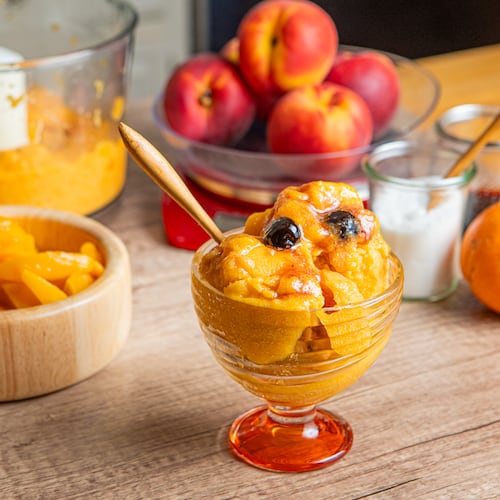Restaurants around town have begun bandying about a welcome word: schnitzel. Abattoir had a chicken schnitzel on its opening menu. Shaun’s had a following for its pork schnitzel with peanuts and Vidalia onions. Now Leon’s Full Service has begun offering a turkey schnitzel.
Although they’ve all been good, I’d think they should properly be called cutlets. All schnitzels are cutlets, but not all cutlets are schnitzels.
To earn the funny and strangely appetizing German name, the meat should be pounded very, very thin and fried to an elegant crisp. This is not the kind of fried item you see in a commercial for vegetable oil, with juices beading from each knife cut, but rather an Old World fried item. Something that’s plain and brown and — though tender — frankly on the dry side. Something that flops over the better part of a plate, naked save for a bit of lemon or parsley adorning it, and has a green salad hovering somewhere nearby. Something that’s strangely, beguilingly uniform and never fails to make crispy-crunchy noises as you saw off and chew bite after bite.
Real schnitzel — the kind so popular in Austria and every country that touches it — can be a little boring and predictable, but that is why it’s so lovable.
Now, I’ve always thought the hallmark of schnitzel was in the way the crust puffs off the meat, crisps, and hovers loosely above the meat. Not that I made a study of the matter when I was a tourist in Austria, but whenever I found myself ordering Wiener schnitzel in a lunch cafe, it was like that; you could peel the crisp crust off in strips if you were so inclined.
But I recently found myself around a table of schnitzel aficionados who insisted that the breading should adhere. A quick poll of friends, chefs and social media sorts revealed that nearly everyone prefers breading that adheres. Yet then a couple of hours of online research revealed that the Viennese do prefer the dry, crisp texture you can only get with breading that pulls away from the meat.
I was intrigued, and it seemed the only way to know schnitzel was to cook schnitzel. The breading, I supposed, would puff or not.
I tested the recipe with boneless pork loin chops that weighed 5 to 6 ounces each. I trimmed the chops of their fat caps and carefully butterflied them before pounding each one out to the size of a Frisbee. That was fun, I must say. I don’t use my meat mallet often enough.
Every recipe I consulted followed the same basic recipe: season the meat, flour it, dip it in an egg wash, roll in crumbs and cook quickly in hot oil.
One called for cake flour to keep the breading from turning gummy. I didn’t have any, but Wondra — a fine-milled flour that contains a small amount of malted barley that helps keep it from clumping — was excellent. It coated the meat with the barest powder, like talcum on a tushie. Next I ran the cutlets through an egg wash that I thinned with milk, following another tip to keep the egg very liquid.
I put them in a pan of bread crumbs. I read on one Viennese website that only stale Kaiser rolls should be used for the crumbs. I didn’t have any around, so I bought a cardboard canister of fine crumbs. I figured they would be better than the coarse Japanese panko I usually prefer. I made sure not to press the crumbs into the meat, but rather to shake the meat in the crumbs, flipping it to coat both sides. Every recipe adamantly said that pressing crumbs was verboten.
Finally, the schnitzel was ready to fry. What kind of fat? A Slovakian friend said I should use lard. One gilded-lily recipe called for clarified butter. Most were happy with vegetable oil. I ended up using a mixture of lard and canola oil, heating an inch of it in the bottom of my cast-iron Dutch oven.
The schnitzels fried up quickly. After two to three minutes on each side, they emerged brown, crisp and ready to go. I served them with lemon wedges and a bowl of chopped tomatoes seasoned with shallots and sherry vinegar.
It was all very tasty, and I think most people would have appreciated the way the breading adhered to the meat. Not I.
I had failed to crack the code on puffy crust. Surely this would require more research.
So being the big, fat geek that I am, I was researching schnitzel the next morning when I was waiting for my daughter to come down for breakfast. Finally I came across a New York Times article in which the Austrian chef Mario Logninger showed food writer Melissa Clark how to make schnitzel crust “soufflé.” He said the real trick is to swirl it in a pan with about an eighth-inch of oil. The hot oil should wash up over the cutlet “in waves,” creating the steam that would encourage the crust to lift and separate away from the meat.
Aha. I had one piece of pork left in the fridge.
My daughter came downstairs to the sound of frantic banging, sizzling oil and one puffy schnitzel for breakfast. She didn’t complain.
The Latest
Featured

